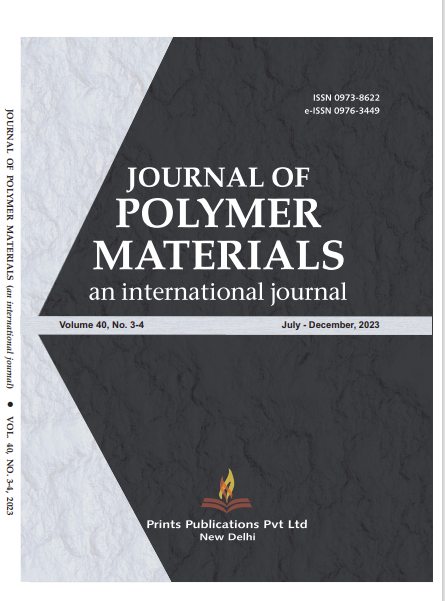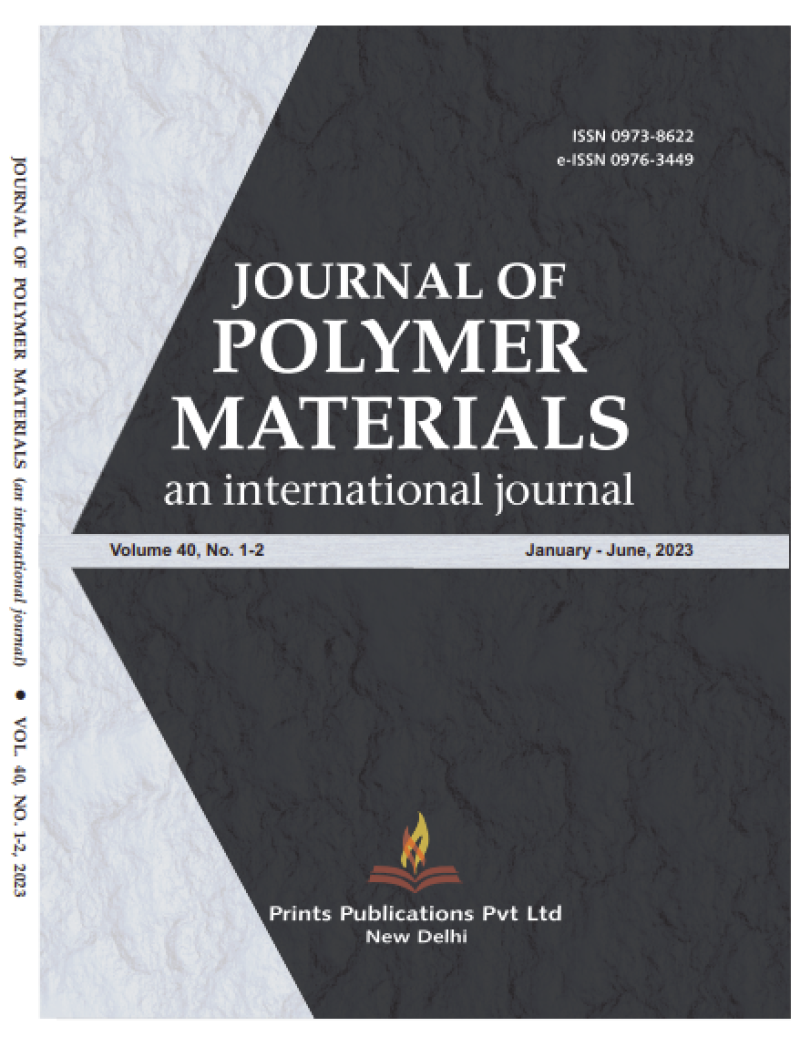Journal of Polymer Materials : An International Journal
Current Volume: 40 (2023 )
ISSN: 0973-8622
e-ISSN: 0976-3449
Periodicity: Quarterly
Month(s) of Publication: March, June, September & December
Subject: Chemistry
DOI: 10.32381/JPM
Tin Slag Polymer Concrete Strengthening by Basalt and Aramid Fiber Reinforced Polymer Confinement
By : Muhamad Soffi Bin Manda, Mohd Ruzaimi Bin Mat Rejab, Shukur Abu Hassan, Mat Uzir Bin Wahit, Joseph Selvi Binoj, Bright Brailson Mansingh, Siti Safarah Binti Amirnuddin, Alamry Ali, Kheng Lim Goh, Didik Nurhadiyanto
Page No: 241-253
Abstract
This study investigates the potential of Tin Slag Polymer Concrete (TSPC) strengthening through confinement using basalt fiber reinforced polymer (BFRP) and aramid fiber reinforced polymer (AFRP) confinement. TSPC short cylindrical column samples have been wrapped with BFRP and AFRP in a single layer (30 mm overlap) using Sikadur-330 epoxy and final samples were coded as TSPC-UC, TSPC-BF and TSPC-AF for unconfined, BFRP and AFRP for confined respectively. After curing for 30 days at room temperature, compressive test has been performed to know the strength, modulus, strain, fracture energy and failure modes of unconfined and confined TSPC. Test result shows that AFRP confinement (114.24 MPa) provide more upsurge in strength enhancement compared to BFRP (81.52 MPa). Fracture energy value of TSPC-AF (821.18 J) is higher than TSPC-BF (538.66 J), but compressive modulus of TSPC-AF (3.23 GPa) is lower than TSPC-BF (4.32 GPa). In addition, yield stress value of TSPC-AF (80.71 MPa) is higher than TSPC-BF (57.21 MPa). Moreover, stress-strain curve and failure mode has shown that TSPC-AF exhibit higher degree of brittleness compared to TSPC-BF. Finally, it is noticed that there are some similarities in strength augmentation of TSPC amid BFRP and glass fiber reinforced polymer (GFRP) as well as between AFRP and carbon fiber reinforced polymer (CFRP) confinement.
Authors :
Muhamad Soffi Bin Manda
Structural Performance Materials Engineering (SUPREME), Faculty of Mechanical & Automotive Engineering Technology, Universiti Malaysia Pahang, Pekan, Pahang, Malaysia.
Department of Mechanical Engineering, Polytechnic Sultan Haji Ahmad Shah (POLISAS), 25350 Semambu, Kuantan, Pahang, Malaysia
Mohd Ruzaimi Bin Mat Rejab
Structural Performance Materials Engineering (SUPREME), Faculty of Mechanical & Automotive Engineering Technology, Universiti Malaysia Pahang, Pekan, Pahang, Malaysia.
Shukur Abu Hassan
School of Chemical and Energy Engineering, Faculty of Engineering, Universiti Teknologi Malaysia (UTM), 81310 UTM Skudai, Johor Bahru, Johor, Malaysia
Centre for Advanced Composites (CACM), Universiti Teknologi Malaysia, Skudai, Johor, Malaysia.
Mat Uzir Bin Wahit
School of Chemical and Energy Engineering, Faculty of Engineering, Universiti Teknologi Malaysia (UTM), 81310 UTM Skudai, Johor Bahru, Johor, Malaysia
Centre for Advanced Composites (CACM), Universiti Teknologi Malaysia, Skudai, Johor, Malaysia.
Joseph Selvi Binoj
Institute of Mechanical Engineering, Saveetha Institute of Medical and Technical Sciences (SIMATS), Chennai -602105, Tamil Nadu, India.
Bright Brailson Mansingh
Department of Mechanical Engineering, Sri Ramakrishna Engineering College, Coimbatore 641022, Tamil Nadu, India.
Siti Safarah Binti Amirnuddin
School of Chemical and Energy Engineering, Faculty of Engineering, Universiti Teknologi Malaysia (UTM), 81310 UTM Skudai, Johor Bahru, Johor, Malaysia.
Alamry Ali
Department of Mechanical Engineering, Prince Sattam bin Abdulaziz University, Al-Kharj 11942, Saudi Arabia.
Kheng Lim Goh
Department of Mechanical Engineering, Newcastle University in Singapore, Singapore.
Faculty of Science, Agriculture & Engineering, Newcastle University, Newcastle Upon Tyne NE17RU, United Kingdom.
Didik Nurhadiyanto
Department of Mechanical Engineering Education, Universitas Negeri Yogyakarta, Yogyakarta, 55281, Indonesia.
DOI: https://doi.org/10.32381/JPM.2022.39.3-4.5



